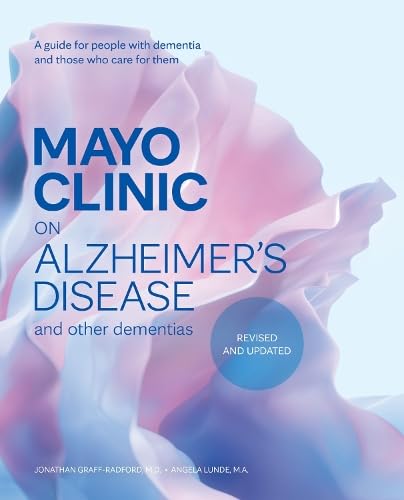 Mayo Clinic on Alzheimer’s Disease and Other Dementias, Revised and Updated by Dr. Jonathan Graff-Radford M.D. & Angela Lunde M.A.
Mayo Clinic on Alzheimer’s Disease and Other Dementias, Revised and Updated by Dr. Jonathan Graff-Radford M.D. & Angela Lunde M.A.ISBN-13: 9798887702834
Hardcover: 312 pages
Publisher: Mayo Clinic Press
Released: Aug. 26, 2025
Source: ebook review copy from the publisher through NetGalley.
Book Description, Modified from Goodreads:
Help to prevent, slow, and understand Alzheimer’s Disease and other Dementias with this guide from the experts at Mayo Clinic. This essential resource includes key information about the latest advancements in diagnosis and treatment, as well as factors that may affect your cognitive health. While Alzheimer’s disease is the most common type of dementia, other types also affect adults worldwide, causing loss of cognitive functions such as memory, reasoning and judgment. In this fully revised and updated third edition of Mayo Clinic’s on Alzheimer’s Disease and Other Dementias leading experts at Mayo Clinic answer patients and caregivers’ most pressing questions, including:
Are there ways you can lower your risk of Alzheimer’s Disease and other dementias? Can they be prevented?
Can you live well with dementia? If so, how?
How do sleeplessness, hearing loss, social isolation, and other risk factors contribute to cognitive decline?
How can exercise and healthy foods preserve brain function?
What are the neurological changes that can occur in the brain, and how is normal aging different from aging with dementia?
How are blood and genetic biomarker tests breaking new ground in diagnosing dementia?
Why is it increasingly important to identify dementia in its early stages?
What are the unique signs and symptoms of Lewy body dementia, frontotemporal degeneration, vascular cognitive impairment, and other dementias?
What are the stages of Alzheimer’s disease?
Can new and emerging medications slow the progression of Alzheimer’s disease?
What day-to-day coping strategies can help people live well with dementia?
How can caregivers care for themselves?
My Review:
Mayo Clinic on Alzheimer’s Disease and Other Dementias is a reference book on the various dementias. It primary talked to the reader as if they were the one getting (or concerned about getting) dementia. Some of the last chapters were aimed at caregivers, covering how to best interact with someone with dementia and how to take care of themselves, too. There was a lot of repeated information. For example, an early chapter gave a good amount of information about the different types of dementias, but this information was repeated and expanded upon in a chapter covering each type of dementia (Alzheimer’s disease, Lewy body dementia, frontotemporal degeneration, vascular cognitive impairment, etc.).
The authors talked about possible causes of dementia, risk factors for it, the symptoms and progression, ways to test for it, and treatments for it. They also talked about things that could look like dementia but are caused by things like drug side effects. I appreciated that they covered nutrition and exercise recommendations and didn't focus solely on the drugs. Overall, I'd recommend this informative book.
If you've read this book, what do you think about it? I'd be honored if you wrote your own opinion of the book in the comments.




